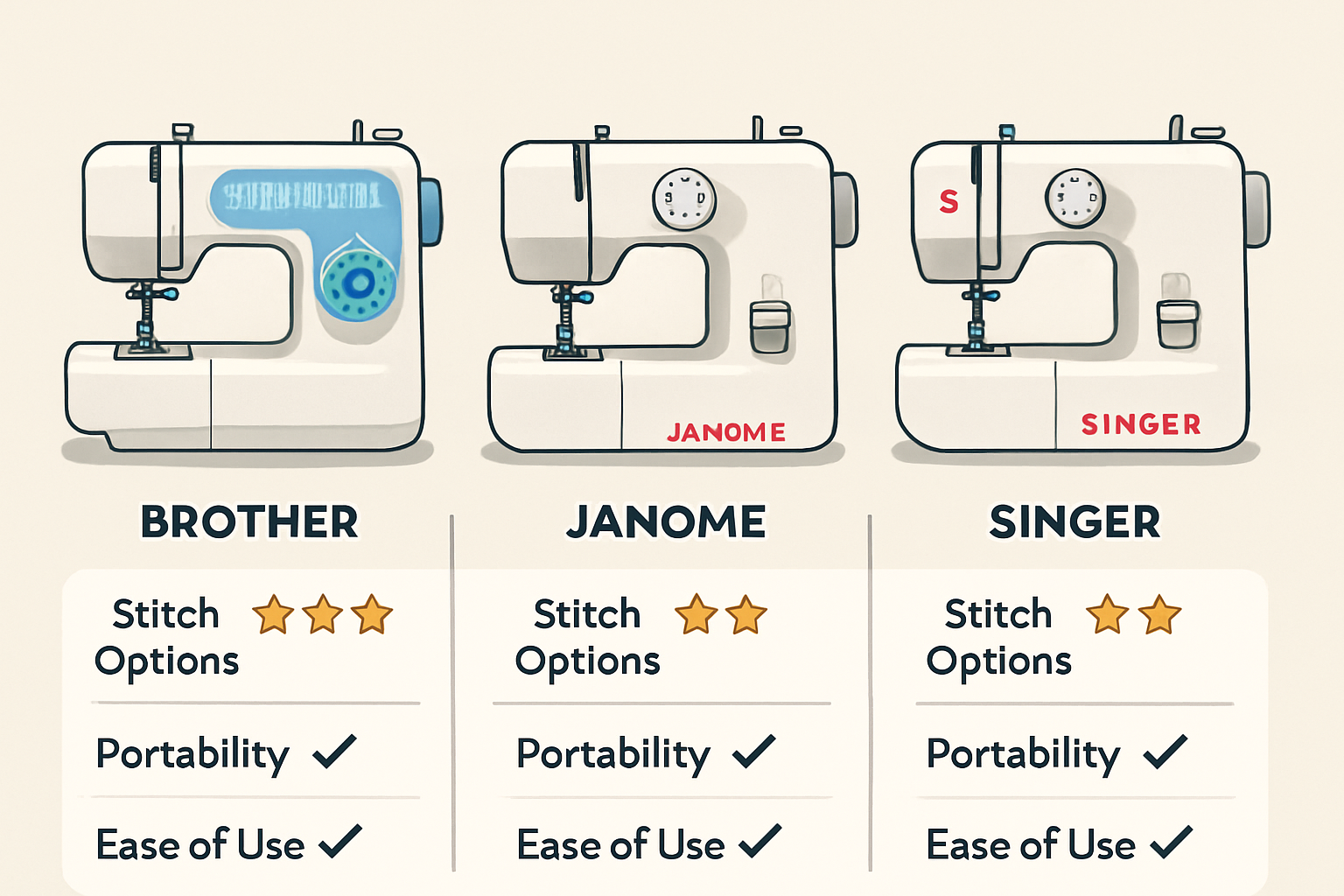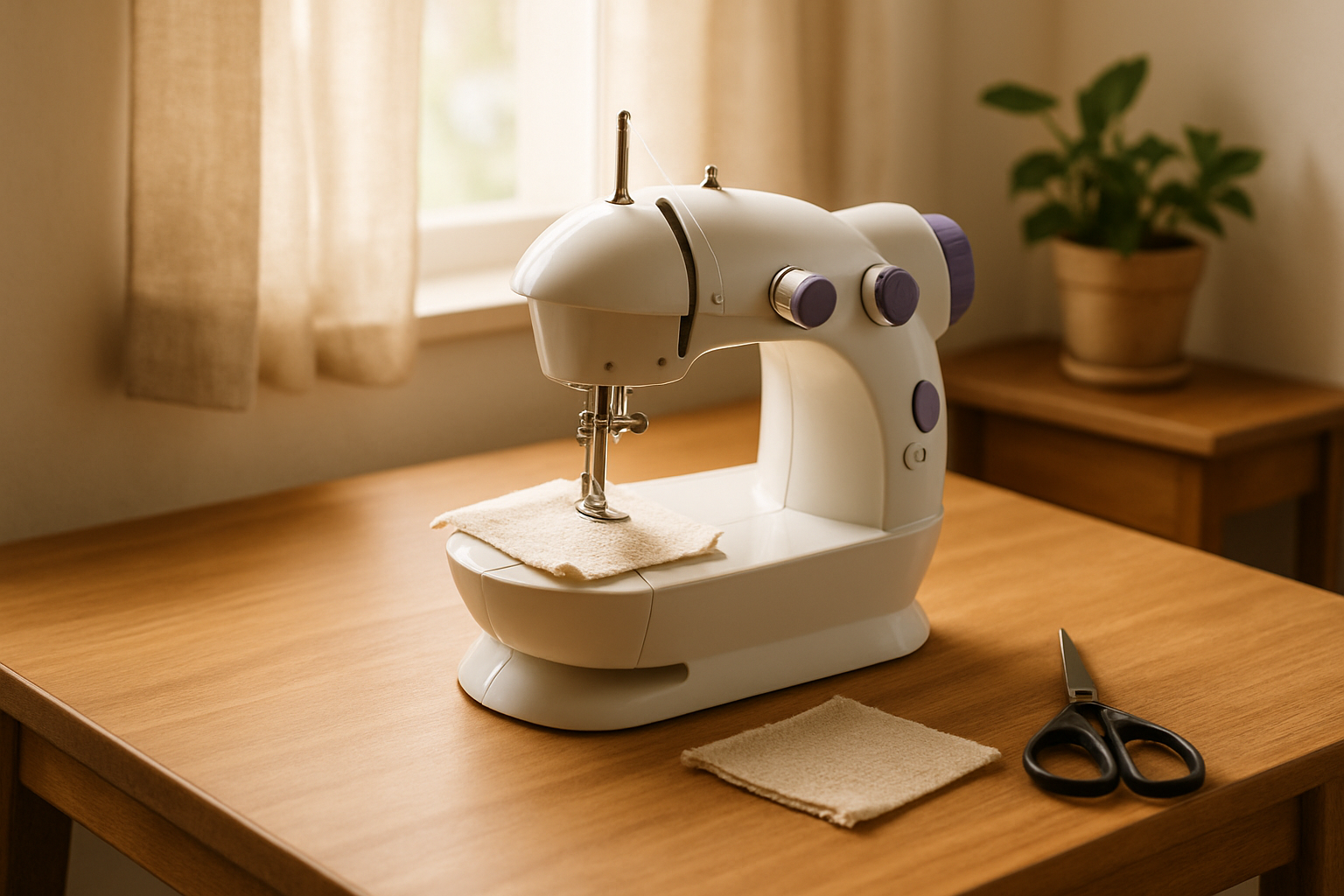In the bustling world of DIY and home crafting, the right tools can make all the difference. For many, a full-sized sewing machine might seem like an intimidating investment or an unnecessary space-hog. This is where the mini sewing machine steps in, offering a compact, often budget-friendly alternative for a variety of home sewing needs. But are these pint-sized powerhouses truly worth it, or are they merely toys? This comprehensive guide will delve into everything you need to know about mini sewing machines, helping you decide if one is the perfect fit for your creative endeavors.
Who Are Mini Sewing Machines Best For?
Mini sewing machines are not one-size-fits-all solutions; rather, they cater to specific user profiles and sewing requirements. Understanding their ideal user can help set realistic expectations and prevent potential frustration.
The Absolute Beginner
For individuals just dipping their toes into the world of sewing, a mini machine can be an excellent starting point. Their simpler operation and fewer features can be less overwhelming than a complex, full-sized model. It allows beginners to learn basic stitching, threading, and fabric handling without a significant financial commitment.
The Occasional Mender
Do you frequently find yourself needing to hem a pair of pants, repair a loose seam, or fix a torn curtain? A mini sewing machine is perfect for these quick, light-duty mending tasks. Its portability means it can be easily pulled out for a few minutes of work and then stored away without hassle.
Crafters with Limited Space
Apartment dwellers, students, or anyone with a small crafting nook will appreciate the minimal footprint of a mini sewing machine. They can easily fit on a small desk or be tucked away in a drawer when not in use, making them ideal for space-constrained environments.
The Portable Project Enthusiast
If you attend sewing classes, craft groups, or simply enjoy sewing in different rooms of your home or even while traveling, a lightweight mini machine is a convenient companion. Its easy transportability makes it a favorite for on-the-go projects.
Children and Young Learners
Many mini sewing machines are designed with safety features and simplified controls, making them suitable for teaching children the basics of sewing. They can be a fun and engaging way to introduce young crafters to a valuable skill.
The Pros and Cons of Mini Sewing Machines
Like any tool, mini sewing machines come with their own set of advantages and disadvantages. A balanced understanding of these can guide your purchasing decision.
Advantages (Pros)
•Affordability: Generally, mini sewing machines are significantly cheaper than their full-sized counterparts, making them an accessible entry point into sewing [1].
•Portability and Compact Size: Their lightweight and small design make them incredibly easy to store, transport, and set up in tight spaces. This is a major draw for those with limited room or who need a machine for travel or classes.
•Ease of Use: With fewer complex settings and functions, mini machines are often straightforward to thread and operate, reducing the learning curve for novices.
•Quick Fixes: They excel at simple tasks like hemming, minor repairs, and basic crafting, allowing for fast completion of small projects.
Disadvantages (Cons)
•Limited Power and Durability: Many mini machines, especially the very inexpensive ones, have less powerful motors and are constructed with more plastic components. This can lead to difficulties with thicker fabrics (like denim or multiple layers) and a shorter lifespan [1].
•Fewer Features: Expect a limited number of stitch options (often just straight and zigzag), and advanced features like automatic needle threaders, adjustable stitch length/width, or buttonhole functions are rare or absent.
•Inconsistent Stitch Quality: Due to lighter construction and less robust feeding mechanisms, stitch quality can sometimes be inconsistent, leading to skipped stitches, tangled threads, or uneven tension [1].
•Frustration for Advanced Projects: Attempting complex projects or working with challenging fabrics on a mini machine can quickly lead to frustration, as they are not designed for heavy-duty or intricate work.
•Poor Resale Value: Very cheap mini machines often have little to no resale value once used, unlike more durable, basic full-sized machines [1].
Key Features to Look For When Buying
If a mini sewing machine aligns with your needs, consider these features to ensure you pick a model that offers the best value and functionality:
1. Stitch Options
While mini machines are basic, look for at least a straight stitch and a zigzag stitch. Some models might offer a few decorative stitches, which can be a bonus for simple crafts.
2. Build Quality
Even in a mini machine, some metal components (especially in the internal mechanism) can indicate better durability. Read reviews to gauge how well the machine holds up to regular use.
3. Speed Control
Dual speed settings (slow and fast) are beneficial, especially for beginners, allowing for better control over stitching speed.
4. Foot Pedal
A foot pedal offers hands-free speed control, which is a significant advantage over models that only have a hand switch.
5. LED Work Light
An integrated LED light illuminates the sewing area, making it easier to see your work and reducing eye strain.
6. Free Arm Capability
A free arm is invaluable for sewing cylindrical items like sleeves, cuffs, and pant hems. Some mini machines offer this feature.
7. Included Accessories
Check for essential accessories like extra bobbins, needles, a threader, and different presser feet (e.g., zipper foot) if available.
Popular Mini Sewing Machine Models: A Comparison
While many generic mini machines flood the market, reputable brands like Brother, Janome, and Singer also offer compact or entry-level models that provide better reliability and performance. It’s important to distinguish between very basic, often toy-like mini machines and more capable, compact entry-level machines from established brands.
Here’s a look at some common offerings and what to expect:
Brother
Brother is renowned for producing user-friendly and reliable sewing machines, often offering excellent value. Their entry-level and portable machines are often a good choice for beginners. For instance, models like the Brother XM2701 (while not strictly a ‘mini’ in the toy sense, it’s a very compact and lightweight full-featured machine) are highly recommended for their balance of features, ease of use, and durability. It typically offers 27 built-in stitches, an automatic one-step buttonhole, and a free arm, making it versatile for various home projects [2].
Janome
Janome is another respected name in the sewing world, known for its robust and reliable machines. They offer models like the Janome SewMini (also known as Janome 124), which is specifically designed to be compact and user-friendly. While it might have fewer stitch options (often just 2-10 stitches) compared to a Brother entry-level model, it’s praised for its solid build quality for its size and consistent stitching, making it a good option for quick mending and basic crafts [3]. It’s often considered a step above many generic mini machines in terms of performance and longevity.
Singer
Singer, a historic brand in sewing, also offers compact and mini machines. Models like the Singer M1000 or Singer Stitch Quick+ are often marketed as entry-level or mending machines. While they are very affordable and portable, some users report that their performance can be inconsistent, particularly with tension and durability, especially for the ultra-cheap models [1]. However, for very occasional, super-light tasks, they might suffice. It’s crucial to differentiate these basic models from Singer’s more robust full-sized entry-level machines.
Here’s a visual comparison of what you might expect from these brands in the compact sewing machine category:

Detailed Comparison Table for Mini Sewing Machine Models
Below is a detailed comparison of the mini sewing machine models mentioned in the blog post, designed to help you better understand their respective features and suitable scenarios.
| Feature / Model | Brother XM2701 (Compact Entry-Level) | Janome SewMini (Janome 124) | Singer M1000 / Stitch Quick+ (Mini/Handheld) |
| Type | Compact, full-featured sewing machine | Mini sewing machine | Mini/Handheld sewing machine |
| Target User | Beginners, users with limited space needing more features, occasional complex projects | Beginners, quick mending, simple crafts, children learning | Very occasional mending, very simple crafts, high demand for price/portability |
| Built-in Stitches | 27 (including utility, decorative, quilting stitches) | 2-10 (typically straight and zigzag) | Very few (typically only straight) |
| Buttonhole Function | Automatic one-step buttonhole | Usually none | Usually none |
| Free Arm | Yes (convenient for sewing sleeves, cuffs, pant hems) | Yes | Usually none |
| LED Work Light | Yes | Usually yes | Usually none |
| Speed Control | Adjustable | Usually dual-speed settings | Usually dual-speed settings |
| Foot Pedal | Yes | Yes | M1000 has, Stitch Quick+ is handheld |
| Main Advantages | Comprehensive features, easy to use, good durability, high cost-performance, suitable for progression | Sturdy build (for its class), stable stitches, very compact and portable, suitable for basic tasks | Extremely low price, ultimate portability (Stitch Quick+), suitable for simplest repairs |
| Main Disadvantages | Slightly larger than true mini machines, slightly higher price | Limited stitch options, struggles with thick fabrics, less durable than full-featured machines | Inconsistent performance, poor stitch quality, poor durability, prone to jamming, not suitable for serious sewing |
| Fabric Handling | Good (suitable for various fabrics, including medium thickness) | Fair (suitable for light fabrics, struggles with thick fabrics) | Poor (only for very light fabrics, almost impossible for thick fabrics) |
| Recommended Use | Daily sewing, garment alteration, home decor, beginner progression | Quick mending, children’s sewing introduction, small craft projects | Emergency repairs, one-time use, as a toy |
| Approx. Price Range | Medium (typically $100-$200 USD) | Lower (typically $50-$100 USD) | Very Low (typically $25-$50 USD) |
Buying Advice for Your First Mini Sewing Machine
Choosing the right mini sewing machine involves more than just picking the cheapest option. Consider these points to make an informed decision:
1.Define Your Needs: Be honest about what you intend to sew. If it’s just occasional mending and very simple crafts, a more basic model might work. If you envision slightly more complex projects or want room to grow, invest a bit more in a compact, entry-level machine from a reputable brand.
2.Read Reviews: Pay close attention to user reviews, especially those that mention specific issues like tension problems, durability, or difficulty with certain fabrics. Look for reviews that discuss the machine’s performance on various materials.
3.Brand Reputation: While generic mini machines are abundant, brands like Brother and Janome generally offer better quality control and customer support, even for their smaller models. Singer has a long history, but their current entry-level mini machines can be hit or miss.
4.Check for Essential Features: Ensure the machine has at least a straight stitch and zigzag, adjustable speed, and ideally a foot pedal and an LED work light. A free arm is a bonus.
5.Consider a slightly larger, but still portable, entry-level machine:** Sometimes, a machine marketed as a full-sized beginner machine (like the Brother XM2701) offers far more value and longevity for a slightly higher price and a bit more space. These machines are still lightweight and portable but are much more capable and less likely to cause frustration.
Conclusion: A Small Machine for Small Tasks
So, is a mini sewing machine the right choice for you? The answer is a resounding yes, provided your expectations are aligned with their capabilities. For the absolute beginner, the occasional mender, or the space-conscious crafter, a mini sewing machine can be a wonderfully convenient and affordable tool. It excels at simple, light-duty tasks and can be a great introduction to the world of sewing.
However, if you have ambitions of quilting, creating garments from scratch, or working with heavy fabrics, a mini machine will likely lead to disappointment. In such cases, investing in a quality, entry-level full-sized machine from a reputable brand is a much wiser long-term decision. These machines will not only handle a wider range of projects but will also grow with you as your skills develop.
Ultimately, the best sewing machine is the one that fits your needs, your space, and your budget. By understanding the pros, cons, and ideal uses of mini sewing machines, you can make a confident choice and embark on your next creative project with the right companion by your side.

References
[1] The Daily Sew. (2023, November 24). Should You Buy a Mini Sewing Machine? https://thedailysew.com/blog/2023/11/should-you-buy-a-mini-sewing-machine/
[2] Brother USA. (n.d.). XM2701 Lightweight, Full-Featured Sewing Machine. https://www.brother-usa.com/products/xm2701
[3] Janome. (n.d.). SewMini. https://www.janome.com/product/sewmini/

Leave a Reply